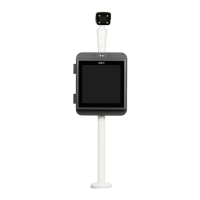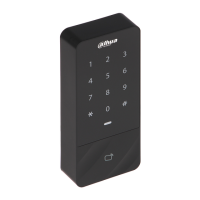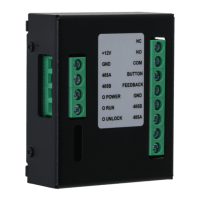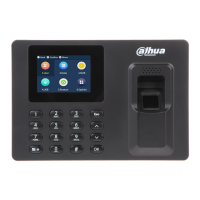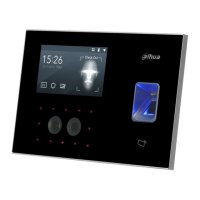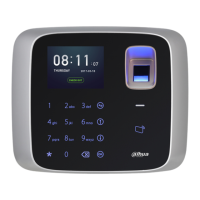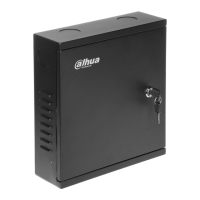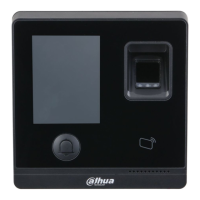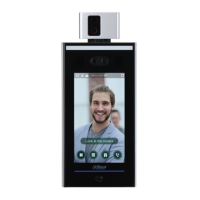
Do you have a question about the Dahua DHI-ASI7213X-V1-T1 and is the answer not in the manual?
| Model | DHI-ASI7213X-V1-T1 |
|---|---|
| Category | IP Access Controllers |
| Communication Interface | TCP/IP |
| ROM | 8 GB |
| Screen Resolution | 1024x600 |
| Camera | 2 MP |
| WDR | 120 dB |
| Card Type | IC card |
| Fingerprint Reader | Yes |
| RS-485 | 1 |
| Wiegand | 1 |
| Alarm Input | 2 |
| Door Magnetic Detection | 1 |
| Exit Button | 1 |
| Doorbell | Yes |
| Lock Control | 1 |
| Tamper | 1 |
| Installation | Surface mount |
| Protection Grade | IP65 |
| Operating Environment | Indoor/Outdoor |
| Reader Interface | Wiegand, RS-485 |
| Inputs | 2 |
| Outputs | 2 |
| Processor | Embedded processor |
| Display Screen | 7-inch LCD |
| Unlock Mode | Card, Fingerprint, Password, Face |
| Fingerprint Verification Mode | 1:1, 1:N |
| Fingerprint Recognition Distance | ≤50 mm |
| Keypad | Touch screen |
| Network Port | 1x RJ45 |
| Alarm Output | 2 |
| Input Power | 12V DC |
| Power Supply | 12V DC, 2A |
| Operating Temperature | -10°C to +55°C |
| Operating Humidity | 10% to 90% RH |
| Supported Readers | RS-485 reader; Wiegand reader |
| Humidity | 10% to 90% RH |
| Weight | 0.8 kg (1.76 lb) |
Details signal words and their meanings used to indicate potential hazards.
Guidelines for safe operation, handling, and environmental conditions.
Precautions related to power supply, wiring, and battery use for safe operation.
Highlights the key capabilities and specifications of the access controller.
Details the intended use cases and environments for the access controller.
Provides physical dimensions and lists the components of the device.
Illustrates and describes the wiring diagram for connecting peripherals to the device.
Offers environmental and placement recommendations for optimal performance.
Step-by-step guide for physically mounting the access controller on a wall.
Outlines the initial setup steps, including initialization, network, and user management.
Explains the various methods for unlocking the door, such as face, card, and password.
Covers adding, viewing, and managing user information and access levels.
Details settings for network connectivity, IP address configuration, and port settings.
Steps for initial web interface setup, including setting admin password and email.
Instructions for accessing and logging into the web management interface.
Configuration options for camera parameters like data rate, image quality, and exposure.
Configuration of network parameters like TCP/IP, ports, and registration for connectivity.
Tips and precautions to follow before registering a user's face for recognition.
Guidance on optimal head and face positioning for accurate recognition.
Recommendations for creating secure and complex passwords with length and character variety.
Importance of keeping software and firmware up-to-date for system security and patches.
Advice on network segmentation, isolation, and access control for security.


